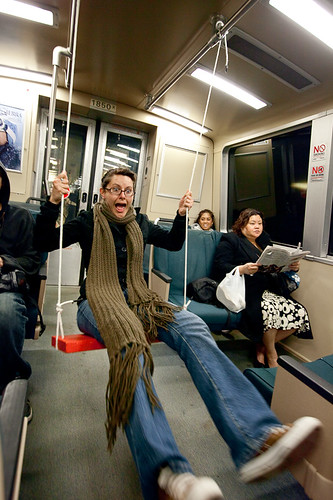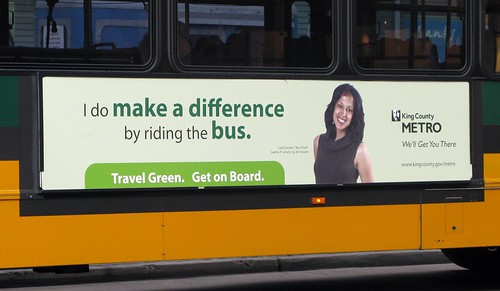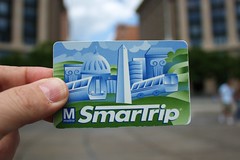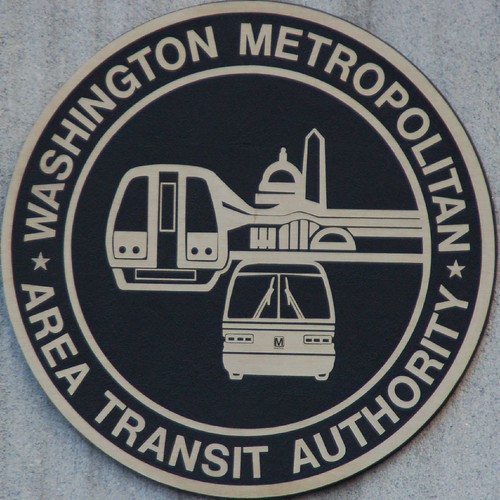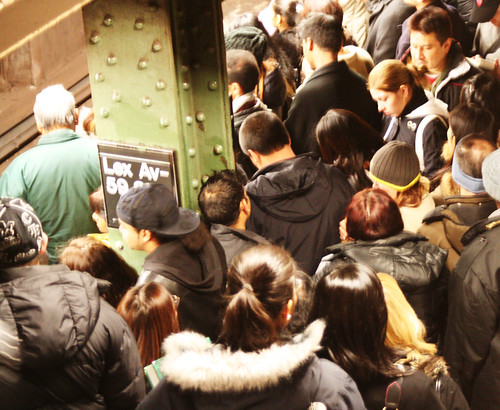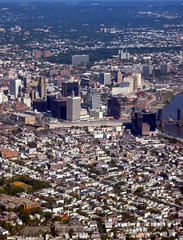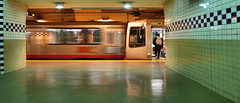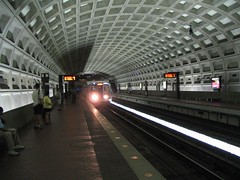Surfing while riding the rails – #NYC subway gets Wi-Fi
If the centuries old New York City Subway can do this, why not in DC’s relatively new and modern subway system? That would make many commutes productive and possibly serve as an incentive for region’s drivers to shed the cars and take the trains to work. I can’t imagine a better town than DC for adopting this technology, because on any given day we have more folks commuting with their Laptops, iPods, iPads, e-readers, etc. It is a shame that we still can’t get the cellphones to work inside the tunnels for more than one carrier.
With the days of paid Wi-Fi clearly numbered, what business models are there for transit agencies and wireless service provider partners to consider? In the first part of several installments, this week we’ll look at Transit Wireless LLC, which is rolling out wireless networks in New York’s extensive subway system.
In 2007, the New York City Transit Authority (NYCTA) awarded a 10-year communication infrastructure contract to Transit Wireless LLC — a conglomerate of construction and wireless companies — that would bring mobile phone and Wi-Fi service to the 277 stations within the city’s subway system. NYCTA’s parent, the Metropolitan Transportation Authority, approved the contract in September 2007 but did not give the official notice to proceed until July this year. The project stalled due to lack of sufficient funding, but was restarted after financing was provided by Broadcast Australia, a Sydney-based multinational that also installed wireless in Hong Kong’s subway. Broadcast Australia, in turn, is controlled by the Canada Pension Plan Investment Board in a convoluted chain of ownership. Under the terms of the original 2007 deal, the NYCTA would earn in excess of $45 million from an estate lease over the 10-year term; Transit Wireless will cover all network construction costs and generate revenue from mobile carriers such as AT&T, Sprint and Verizon, who would provide cellular service over the Transit Wireless network.
The whole roll-out is expected to cost around $250 million including the payments to the NYCTA; work will commence on the first six stations in Manhattan by September, with live service expected in all six within two years. The remaining 271 stations will be completed within the next six years, although a spokesman for Transit Wireless stated that up to 15 stations a month could be outfitted during the rolling program. Phone and Wi-Fi coverage will be available only in the stations, on platforms and part-way into adjacent tunnels; the contract does not stipulate contiguous coverage throughout the subway system. In addition to consumer services, the Transit Wireless solution will serve public safety organizations by providing the source of a cell phone’s signal within a station, improving incident response times.


